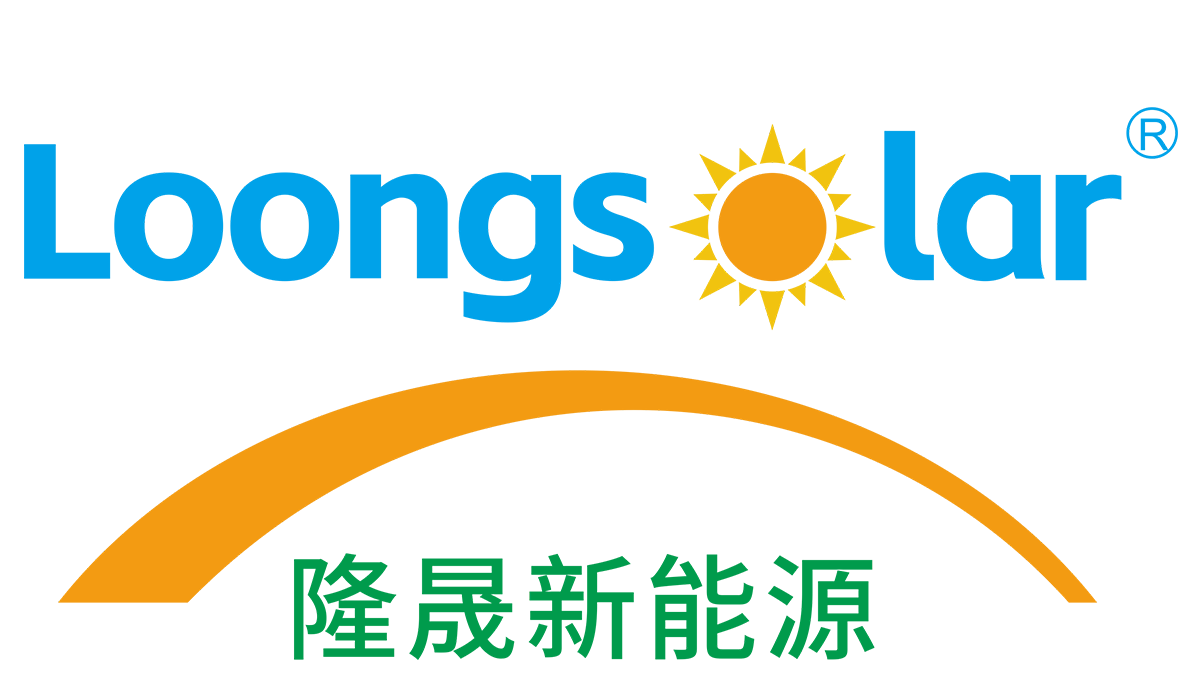เหตุใดท่อสังกะสี-แมกนีเซียม-อะลูมิเนียมจึงโดดเด่นในโครงสร้างพลังงานแสงอาทิตย์
คำอธิบายเกี่ยวกับความต้านทานการกัดกร่อนที่ยอดเยี่ยม
ท่อ ZMA เหมาะอย่างยิ่งสำหรับการใช้งานพลังงานแสงอาทิตย์เนื่องจากมีความต้านทานต่อการกัดกร่อนสูง ลักษณะนี้เกิดจากการผสมโลหะพิเศษซึ่งเพิ่มการป้องกันของท่อเหล่านี้ต่อสภาพแวดล้อมที่ไม่เอื้ออำนวย การทดสอบพบว่าการป้องกันการกัดกร่อนของ ZMA มีประสิทธิภาพมากกว่าวัสดุมาตรฐาน เช่น เหล็กชุบสังกะสีประมาณ 2-3 เท่า และดีกว่าในสภาพน้ำเค็มถึง 50-60 เท่า สิ่งนี้เกิดจากธรรมชาติของการเสียสละของสังกะสีในโลหะผสมซึ่งช่วยให้กระบวนการซ่อมแซมตัวเองเป็นไปได้ คุณสมบัตินี้สำคัญมากในการรับประกันอายุการใช้งานที่เหมาะสมของโครงสร้าง โดยเฉพาะอย่างยิ่งในสถานที่ใกล้ชายฝั่งที่มีสภาพแวดล้อมรุนแรง อธิบายโดยย่อ คุณภาพที่ทนทานของท่อ ZMA รับประกันว่าจะคงอยู่ได้นาน ซึ่งเป็นสิ่งที่คุณต้องการสำหรับระบบแผงโซลาร์
อายุการใช้งานที่ยาวนานในสภาพแวดล้อมชายฝั่งและพื้นที่ที่มีความชื้นสูง
ຄວາມສັງຂອງທ່ົ່າ ZMA ໄດ້ເປັນໄປດີຫຼາຍໃນການຕໍ່ສູ້ກັບສະຖານະທີ່ຮ້າຍແຮງທີ່ພົບເລີ່ມໃນຫຼາຍສະຖານທີ່ທີ່ຢູ່ຄົນເຂົ້າຫຼືສະຖານະທີ່ມີຄວາມຊຸມສູງ, ໂດຍທີ່ມີຄວາມປຸ້ມແລະເສຍແຜ່ນ. ການສຶກສາໄດ້ສະແດງວ່າ ເມື່ອສະໝຸກຖືກກໍາລັງໂດຍວັດຖຸ ZMA, ມັນສາມາດຢຸ່ມັນໄປຍາວກວ່າ 40% ທີ່ສະໝຸກທີ່ກໍາລັງໂດຍວັດຖຸທີ່ບໍ່ແມ່ນ ZMA. ຄວາມສັງເປັນເລື່ອງທີ່ດີຫຼາຍແນະນຳວ່າ ທ່ົ່າ ZMA ສາມາດຮັກສາຮູບແບບແລະຟັງຊັນຂອງມັນໄປຍາວຫຼາຍ. ZMA ນຳເອົາວິທີ້ສຳລັບການລົງທຶນໃນລະບົບແຜນໜ້າວຽງ, ບໍ່ເປັນຫຍັງເພື່ອສະຖານະທີ່ຮ້າຍແຮງ. ອັງຄານທີ່ສັງຂອງມັນ, ແລະວັດຖຸທີ່ຕ້ອງການກັບສະຖານະເວລາ, ຕົວເຫຼົ້າເຫຼົ້າເຫຼົ້າເຫຼົ້າເຫຼົ້າເຫຼົ້າ.
ความแข็งแรงน้ำหนักเบาสำหรับการติดตั้งแผงโซลาร์
ແບບອາການຂອງ ZMA ຕູບມີຄວາມແຂງແລະໜັງເบาແລະສາມາດໃຊ້ໄດ້ດີທີ່ສຸດສํາລັບການຕິດຕັ້ງພະລັງງານສົ່ງ. ອີງຄົນນີ້ຍັງເປັນສິ່ງທີ່ຈຳເປັນສํາລັບຄວາມສະຫງົບສຸກຂອງການຈັດຮຽງ, ເພາະວ່າມັນຊ່ວຍໃຫ້ສາມາດສ້າງໂຄສະນະໄດ້, ເນື່ອງຈາກວ່າມັນຫຼຸດຄວາມຫຼັງຫຼົ້ມຂອງລົງທຶນ. ຄວາມຫຼຸດຂອງນ້ຳໜັກອະນຸຍາດໃຫ້ມີການຕິດຕັ້ງໄດ້ວັນແລະຫຼຸດຄ່າສົ່ງ. ການປະຕິບັດນີ້ມີຄຸນຄ່າທີ່ສົມບູນກັບຄວາມແຂງແລະຄວາມເບາຂອງ ZMA ຕູບເຫຼັກທີ່ອະນຸຍາດໃຫ້ມີການດີไซນ໌ຕິດຕັ້ງພະລັງງານສົ່ງໃໝ່ແລະນັບນິຍົມ. ດີໄຊນ໌ເຫຼົ່ານີ້ສາມາດເປັນທີ່ຕ້ອງການສຳລັບການສູ້ສຳເລັດທີ່ສຸດຂອງລະບົບຜົນລົງພະລັງງານສົ່ງທີ່ບ້ານແລະເບິ່ງໄດ້ຄ່າສົ່ງທີ່ຕ້ອງການ. ຄວາມແຂງແລະໜັງເບາຂອງ ZMA ຕູບອະນຸຍາດໃຫ້ມີການຕິດຕັ້ງພະລັງງານສົ່ງທີ່ໜ້າສົງສະຫຼາຍທີ່ສຸດ.
ການລາຍລະອຽດທີ່ສຳຄັນໃນລະບົບ panels
ການຕິດຕັ້ງລະບົບພະລັງງານທີ່ບ້ານ
ท่อสังกะสีแมกนีเซียมอะลูมิเนียม (ZMA) เป็นที่นิยมสำหรับการติดตั้งพลังงานแสงอาทิตย์ในบ้านพักอาศัย เนื่องจากมีความทนทานและราคาไม่แพง ด้วยการออกแบบที่แข็งแรงเพื่อรองรับแผงโซลาร์ สามารถใช้งานได้บนรถแคมป์ปิ้ง เรือ และหลังคา ท่อ ZMA ได้กลายเป็นมาตรฐานสำหรับผู้รับเหมาเนื่องจากความต้องการวัสดุที่เชื่อถือได้เพิ่มขึ้นเมื่อบ้านเรือนมากขึ้นใช้พลังงานจากแสงอาทิตย์ นอกจากนี้ ท่อดังกล่าวยังให้ช่วงเวลาการใช้งานที่ยาวนานและต้องการการบำรุงรักษาต่ำ ซึ่งช่วยลดต้นทุนตลอดอายุการใช้งานของระบบโซลาร์
ຄວາມປະໂຫຍດຂອງໜ້າສົ່ງຫຼາຍ
ທ່ອງ ZMA ແມ່ນຄຳຕອບຫລັງທີ່ສຳຄັນໃນເຂດການແຜນການສຳລັບຮ້າຍພະຍານສູນ, ບ່ອນທີ່ມັນໄດ້ຖືກສຸກສາວໆວ່າສາມາດຊ່ວຍໃຫ້ກັບຈຳນວນຫຼາຍຂອງພາຍະ. ລະບົບເຫ່ຍ່ນີ້ມັກຈະຂໍ້ຄວາມຕ້ອງການຂອງເປົ້າທີ່ສາມາດຮັບກັບຄວາມຕ້ອງການຂອງລະບົບຂອງການປ້ອງກັນຄວາມຫຼືມແລະການຕັ້ງຄ້າງໄວ. ທ່ອງ ZMA ອັງຫຼາຍເວລາໃນການຕັ້ງຄ້າງ, ຄຳແນະຫຼັງທີ່ສຳຄັນສຳລັບໂຄງການທີ່ຕ້ອງການເຂົ້າໃນການປະຕິບັດໄວ. ແລະຄວາມແຂງແຍງຍັງແທນກັບຄ່າໃຫ້ການປ້ອງກັນຕ່ำກວ່າ - ບົດທີ່ຜູ້ປະຕິບັດຮ້າຍພະຍານແມ່ນສຳນັກໃນເວລາທີ່ພຽງແລະພຽງເພື່ອຫຼຸດຄ່າໃຫ້ການປ້ອງກັນໃນເວລາຍາວ.
การผสานเข้ากับระบบพลังงานโซลาร์ภายในบ้าน
ບົວເສັ້ນ ZMA ມີຄວາມຍິ່ງຍອນທີ່ຈະຖືກນຳໃຊ້ໃນລະບົບແຫຼັງຮູ້ມຕໍ່ໄປສຳລັບພະເນົາໂຮມ ແລະດັ່ງນັ້ນບໍ່ມີກາຍິ່ງຢູ່ໃນການຕິດຕັ້ງທີ່ມາດາ. ເນື່ອງຈາກການໃຊ້ລະບົບແຫຼັງຮູ້ມຈະຖືກຂື້ນ, ບົວ ZMA ມີຄວາມຍິ່ງຍອນທີ່ສາມາດຄົບຄຸມກັບເทັກນົອລົກີ່ສົ່ງທີ່ມີໃນປະຈຸບັນ. ຄວາມຍິ່ງຍອນນີ້ມັກຈະມີກັບແຜນອອກແບບທີ່ສະຫງ່າມື້ແລະຄວາມແຂງແຂງໃນການໃຊ້ແຫຼັງຮູ້ມ ແລະ ນຳມາທີ່ທັງຄວາມງາມແລະຄວາມໝັນຄືກັບລະບົບແຫຼັງຮູ້ມ. ດັ່ງນັ້ນ ມັນຍັງສະຫງ່າມື້ຕິດຕັ້ງ, ມີນ້ຳໜັກນ້ອຍ ແລະ ອັດຕາຄ່າຕິດຕັ້ງຕ່ຳ.
เปรียบเทียบข้อได้เปรียบเหนือวัสดุแบบเดิม
ประสิทธิภาพของ ZMA เทียบกับเหล็กชุบสังกะสีแบบจุ่มร้อน
ZMA, ຄຸນຫາທີ່ສະແດງອັດຕາຂອງ ZMA ໃນການເປີນພຽງແມ່ນກວ່າເหลືກທີ່ຖືກຈຳເນີຍດ້ວຍເຄື່ອງຮ้อน. ສະເພາະ, ZMA ກຳລັງໃຫ້ຄວາມຊັບສົງແລະການป້ອງກັນການເສຍໄປຈາກເຄື່ອງຮ้อนຢ່າງດີ ໃນສະຖານທີ່ທີ່ເຄື່ອງຮ้อนບໍ່ສາມາດຜ່ານການສອບສວນໄດ້. ຕຳຫຼວດ ZMA ໄດ້ຖືກລາຍງານວ່າຍັງຄົງທີ່ສູງສຸດ ເມື່ອຖືກປະກັນໂດຍສະຖານທີ່ແຮງແຮ່ມາຫຼາຍສິບປີ. ອີງຕາມການສຶກສາ. ດຳເນີນການ, ທາງ ZMA ມີນ້ຳໜັກນ້ອຍກວ່າ ເຊິ່ງສັກສິດການກໍາສັນ, ການສົ່ງ, ແລະການຕິດຕັ້ງ, ເຮັດໃຫ້ມັນເປັນເຄື່ອງມືທີ່ສັກສິດຫຼາຍໃນອຸດົມສາຫະພັນການຕິດຕັ້ງພານສົ່ງ. ປະເທດແຫ່ງນີ້ແມ່ນສ່ວນໜຶ່ງຂອງສິ່ງທີ່ເຮັດໃຫ້ ZMA ຢູ່ໃນການພັດທະນາພະລັງງານສົ່ງ.
ກົນໄກການສ້ອມແປງຕົນເອງຂອງຝາ
ຫນຶ່ງ ໃນລັກສະນະທີ່ ຫນ້າ ສັງເກດຂອງທໍ່ ZMA ແມ່ນການເຄືອບພິເສດທີ່ມີຄຸນສົມບັດການສ້ອມແປງຕົນເອງ. ນີ້ເປັນຄຸນລັກສະນະທີ່ສໍາຄັນ ສໍາລັບຄວາມທົນທານຂອງອາກາດ ແລະເຮັດໃຫ້ມີຄວາມແຕກຕ່າງ ລະຫວ່າງແສງຕາເວັນທີ່ລົ້ມເຫລວພາຍໃນເວລາບໍ່ເຖິງ 10 ປີ ແລະແສງຕາເວັນທີ່ສາມາດໃຊ້ໄດ້ຫຼາຍກວ່າ 50 ປີ ດັ່ງນັ້ນ, ມັນເປັນການຊ່ວຍເຫຼືອໃນການປະຢັດເວລາ ສໍາ ລັບການ ບໍາ ລຸງຮັກສາເລື້ອຍໆ, ເຊິ່ງເປັນປະໂຫຍດໂດຍສະເພາະຕໍ່ເຕັກໂນໂລຢີກ່ອນ ຫນ້າ ນີ້ໃນແງ່ຂອງວັດສະດຸ. ການສຶກສາທີ່ຜ່ານມາຢືນຢັນວ່າຄ່າໃຊ້ຈ່າຍໃນການ ບໍາ ລຸງຮັກສາຂອງໂຄງສ້າງທີ່ເຮັດຈາກ ZMA ເມື່ອທຽບກັບຜູ້ທີ່ໃຊ້ວັດສະດຸອື່ນໆແມ່ນຕ່ ໍາ ກວ່າ 50%, ເຊິ່ງຍັງໄດ້ກ່າວຢ້ໍາອີກເທື່ອ ຫນຶ່ງ ກ່ຽວກັບລັກສະນະເສດຖະກິດຂອງ ZMA.
ການບໍ່ຕ້ອງ Maintenance ສຳລັບ Solar Installations
ຄວາມຕ້ອງການດັ່ງໃນການປ້ອງກັນຍັງແມ່ນຕ່ำຫຼາຍຂຶ້ນສํາລັບທ່ອງ ZMA ເຊິ່ງໃຫ້ຜູ້ເສຍຄ່າໃນໄລຍະຊີວິດຂອງອາການໃຊ້ພະລັງງານສຸນ. ການຕິດຕັ້ງສາມາດເຮັດວຽກຢູ່ຄວາມມື້ງຄືກັບຄວາມສຳເລັດຫຼາຍເນື່ອງຈາກມີຄວາມຕ້ອງການສູບສີ້ນນ້ອຍ. ອີງຕາມບົດຂ່າວຂອງອຸດมະກຳ ການເສຍຄ່າໃນໄລຍະຊີວິດທີ່ ZMA ດຳເນີນໄປແມ່ນສູງຫຼາຍ ແລະມີການລົບລັບຄ່າໃນລັບທັງໝົດຫຼາຍເນື່ອງຈາກເມື່ອເปรີຍບ່ອນເສຍຄ່າຂອງເສັ້ນທີ່ເປັນເປັນສ່ວນໜຶ່ງຂອງລະບົບພະລັງງານສຸນ. ນີ້ບໍ່ພຽງແຕ່ໃຫ້ຜູ້ເສຍຄ່າໃນໄລຍະຍາວ ແຕ່ຍັງເຮັດໃຫ້ໂຄງການພະລັງງານສຸນມີຄວາມປະສົບຄວາມສຳເລັດແລະຖືກຕ້ອງ.
ວິທີການແຫຼັງທີ່ດີທີ່ສຸດສຳລັບວັດຖຸ ZMA
ການແຫ່ງສະຫຼວດ ZMA ຕ້ອງກາຍເທັກນິກທີ່ສາມາດປົກຄອງຊີວິດຍາວແລະຮ່ວມແຫ່ງທີ່ແຂງແຮງໄດ້. ຄົນຕິດຕັ້ງຕ້ອງຮູ້ວ່າເທັກນິກໃດເປັນສະເພາະ, ເຊັ່ນ TIG (Tungsten Inert Gas) ການແຫ່ງ, ເກັບກຸ່ມ argon ລຳເບີກຄວາມຮ້ອນຈາກສະພາບແວນລ໌, ດังນັ້ນມันຈະບໍ່ເຮັດໃຫ້ເກີດออกຊີເດຊັ່ນໃນເວລາທີ່ແຫ່ງທີ່ອຸນຫະພູມສູງແລະບໍ່ສູญເສຍຄວາມແຂງ. ຄົນຕິດຕັ້ງຕ້ອງເປັນໃຈວ່າຕ້ອງປ້ອງກັນຄວາມຮ້ອນເกິນ, ເນື່ອງຈາກວ່າສິ່ງນີ້ສາມາດເຫີຍຄວາມແຂງຂອງສະຫຼວດໄດ້. "ນ້ຳທີ່ໃຊ້ລ້າງໃນການແຫ່ງເຕັມຫຼາຍຕ້ອງຖືກລ້າງໃຫ້ສິ້ນສານ, ບໍ່ມີสนິມ, ອຸບັດທີ, ແລະສິ່ງໜ້າຍ. ໃນວິທີການທີ່ອະທິບາຍເທິງນີ້, ນີ້ແລະເຂດທີ່ແຫ່ງແລ້ວມີຄຸณະພາບທີ່ສົ່ງມາໂດຍການໃຊ້ວັດຖຸຝັກທີ່ເປັນສະເພາະ, ເປັນສະເພາະແຫຼວດອັลມິນ-ອັลມິນ, ເປັນທີ່ການແຫ່ງສະຫຼວດແຫຼ້ງ.
ຄວາມລົງທີ່ທີ່ດີທີ່ສຸດສໍາລັບຄວາມສົມບູນການສ້າງ
ການເລືອງຄວາມໜັງຂອງທ່າ ZMA ໄດໆແມ່ນສຳຄັນໃນການປະຕິບັດຄວາມໜັງ, ລະຫວ່າງກັນເປັນພິเศດໃນການປະກັບກັບສະຖານະอากາດທີ່ຕ່າງກັນ. ການສຶກສາວິศວະກຸລສຳເນີດຄວາມໜັງເພື່ອສະເພາະການໂຫຼດແລະການເຜົ້າ, ຕື້ຍຄວາມປອດໄພແລະຄວາມໜັງຕ່ຳສຸດ. ຄວາມໜັງທີ່ຊຸນເຊິ່ງແມ່ນ 0.12-4.5mm, ແລະຄວາມໜັງທີ່ຊຸນເຊິ່ງແມ່ນ 0.3, 0.6, 0.8, 1.2, 1.5, 2.0, 2.5, 3.0, 3.5, 4.0 ແລະ 4.5mm, ເຊິ່ງແມ່ນຕາມນ້ຳໜັກຂອງຊີນ. ຄວາມໜັງຈະຖືກສຶກສາເປັນປະຈຳໂດຍຜູ້ຕິດຕັ້ງເປັນການປະຕິບັດທີ່ແມ່ນ, ແລະຕ້ອງຖືກອັບເດດຕາມການປະຕິບັດທີ່ດີທີ່ສຸດຂອງວິศວະກຸລ.
ຄວາມຕ້ອງການກັບອາກາດໃນສະພາບທີ່ຕ່າງກັນ
ZMA ສຳເລັດຫຼາຍໃນສະຖານະທີ່ຂອງການເຄື່ອນໄຫວທີ່ແຕກຕ່າງກັນ, ບໍ່ວ່າຈະຢູ່ພື້ນທີ່ສົ່ງຫຼືພື້ນທີ່ຮຸບ, ຄືກັບການກ່າວວ່າມັນເປັນສິ່ງທີ່ເປັນສະເພາະສໍາລັບການໃຊ້ງານສົ່ງ. ການຄົ້ນຄວ້ນກ່ອນຫນ້ານີ້ໄດ້ກ່າວວ່າ ZMA ດຳເນີນງານໄດ້ໂດຍມີຄວາມເປັນຫຼາຍໃນອາຍຸການໃຊ້ງານຍາວໃນສະຖານະທີ່ຂອງການເຄື່ອນໄຫວທີ່ຮ້າຍແຮງ. ການພຶດສະພາງ Installers ຈະຕ້ອງເອົາເຂົ້າໃນການເປັນຫຼາຍຂອງສະຖານະທີ່ຂອງພື້ນທີ່ຂອງພວກເຂົາກ່ອນທີ່ຈະເລືອກ ZMA ມາເຕີຣຽງທີ່ຈະຍາວທີ່ສຸດແລະກ່ຽນສົ່ງຜົນການເຮັດວຽກທີ່ດີທີ່ສຸດຂອງລະບົບແຜນການສົ່ງ. ການເປັນຫຼາຍເຫດການເຫຼົ່ານີ້ສາມາດຖືກເອົາເຂົ້າໃນການເປັນຫຼາຍຂອງຊີວິດແລະຜົນການເຮັດວຽກຂອງການສົ່ງ, ຕຳຫຼວດຕາມສະຖານະທີ່ຂອງພະຍານທີ່ພື້ນທີ່.
Table of Contents
-
เหตุใดท่อสังกะสี-แมกนีเซียม-อะลูมิเนียมจึงโดดเด่นในโครงสร้างพลังงานแสงอาทิตย์
- คำอธิบายเกี่ยวกับความต้านทานการกัดกร่อนที่ยอดเยี่ยม
- อายุการใช้งานที่ยาวนานในสภาพแวดล้อมชายฝั่งและพื้นที่ที่มีความชื้นสูง
- ความแข็งแรงน้ำหนักเบาสำหรับการติดตั้งแผงโซลาร์
- ການລາຍລະອຽດທີ່ສຳຄັນໃນລະບົບ panels
- ການຕິດຕັ້ງລະບົບພະລັງງານທີ່ບ້ານ
- ຄວາມປະໂຫຍດຂອງໜ້າສົ່ງຫຼາຍ
- การผสานเข้ากับระบบพลังงานโซลาร์ภายในบ้าน
- เปรียบเทียบข้อได้เปรียบเหนือวัสดุแบบเดิม
- ประสิทธิภาพของ ZMA เทียบกับเหล็กชุบสังกะสีแบบจุ่มร้อน
- ກົນໄກການສ້ອມແປງຕົນເອງຂອງຝາ
- ການບໍ່ຕ້ອງ Maintenance ສຳລັບ Solar Installations
- ວິທີການແຫຼັງທີ່ດີທີ່ສຸດສຳລັບວັດຖຸ ZMA
- ຄວາມລົງທີ່ທີ່ດີທີ່ສຸດສໍາລັບຄວາມສົມບູນການສ້າງ
- ຄວາມຕ້ອງການກັບອາກາດໃນສະພາບທີ່ຕ່າງກັນ






